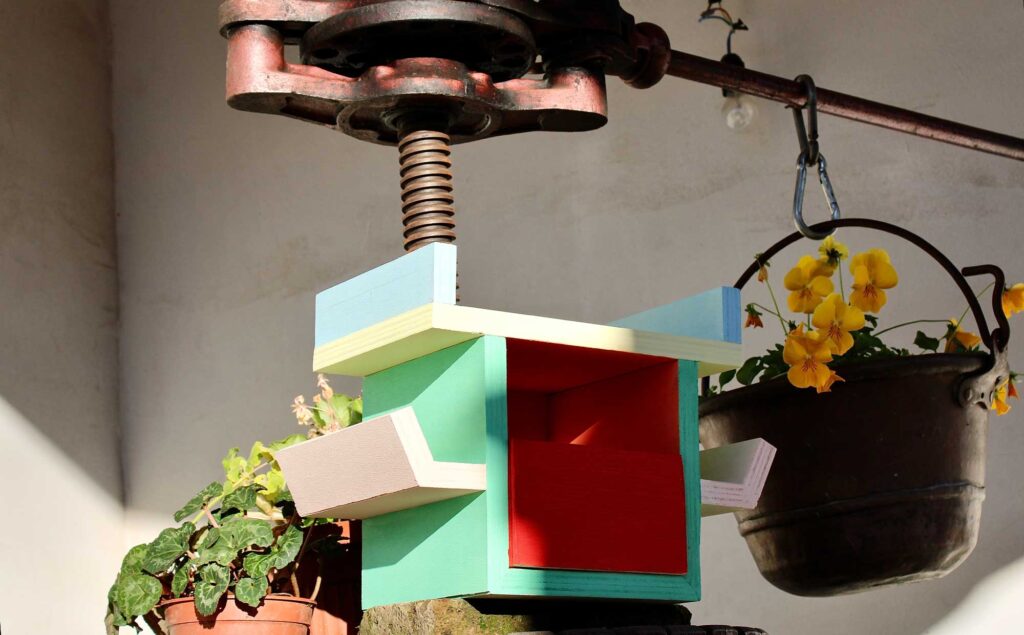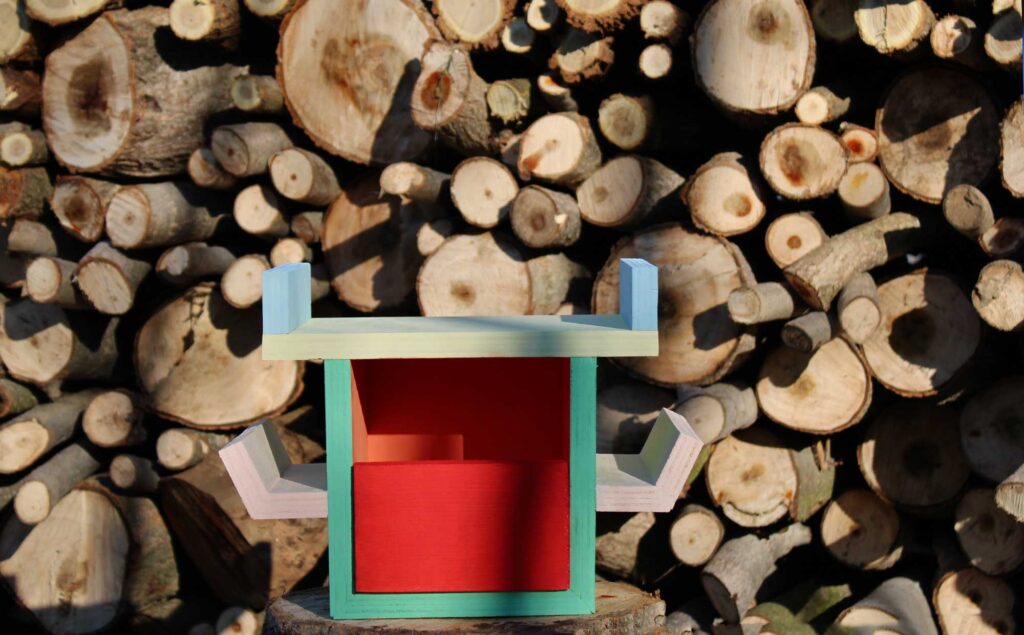Air&Bird
Course:
Product Design 1
Lecturer:
Cesar Arroyo
Students:
Draft
Favaron
Marked
Seraglio
Sinigaglia
Following the brief of the Air&Bird project, which is to design a bird shelter exclusively made of wood and matched with the design and aesthetic style of a well-known classic or contemporary designer, we designed a small structure in which style meets bright and vibrant colors. We started from the solid stylistic base left to us by the Memphis group, a true artistic and cultural movement born in 1981. Making small runs of objects, mostly in collaboration with small companies and artisan workshops, they sought to go against signature design by promoting an ideal of a popular and democratic object, characterized by vibrant colors, geometric shapes, textures and decorations aimed at generating optimism. In analyzing the members of the group, we then took to analyzing one of its fathers, the great and influential master of Italian design, Ettore Sottsass. A multifaceted figure, Sottsass distinguished himself in various disciplines but is known internationally as the one who overcame the rigid functionalism that permeated architecture and design in the years before and after World War II. In his language, the potential energy and vitality of drawing and color stand in contrast to all intellectualism and rigidity, resulting in iconic pieces such as the Ashoka table lamp or the Carlton bookcase, from which we have taken our cue. And this is how, starting with careful analysis and articulate brainstorming, we arrived at the first draft of what we later called Sottsass be like.


Taking vertical, diagonal,horizontal arms as our cue, we initially thought of an interplay of intersections of various planes on a 5-sided cubic surface, one missing to allow free access to various species of birds. The various planes, we thought, could be useful to the birds as planes of support and rest both inside the shelter and on the outside of it. Having rejected the idea for inefficiency, we revised the initial idea and moved on to the next step. After several revisions, we then arrived at the final form, that is, a reproduction of some focal points of the bookcase such as: the upper and side arms and the pull-out drawer. We then created technical tables and 3D model of it with Rhino software by reproducing two different models of it: one faithful to the final result and another one with the addition of a meter-high trestle, plus the base. We then moved on to the next step, the creation of some still-life renders with colors and materials equal to those of the prototype built later. The latter consists of 5 fir wood slabs measuring 20 x 20 centimeters and a thickness of 1 centimeter that go to make up the main body of the shelter that will house the bird’s nest. To now were then glued and nailed a few pieces of wood of different sizes to go to represent the arms of the Carlton reference bookcase. We then crowned them using colors of pastel shades such as yellow, light blue pink and green, and high-saturation colors such as blue for the back of the birdhouse, orange for the interior and red for the pull-out drawer. They were placed trying to create a harmonious composition true to the original.

